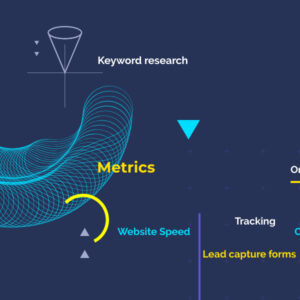The world is rapidly evolving, and technology is playing a major role in this evolution. Artificial Intelligence (AI) is one of the most revolutionary technologies of the 21st century, and it’s beginning to have a major impact on the job market. Many jobs are now at risk of being replaced by AI, and it’s no longer a matter of if, but when. But don’t worry, there’s still a way to thrive in an AI-driven world. In this blog post, I’ll tell you all about AI, the jobs at risk of being replaced by AI, and strategies to stay ahead of the curve.
Introduction to AI and its impact on the job market
AI is a branch of computer science that deals with the development of computers and robots that can think, act and make decisions like humans. AI is being used in a variety of industries, from healthcare to manufacturing and retail, and is transforming the way we work. AI has already replaced many manual jobs, such as manufacturing and data entry, and is now beginning to replace white-collar jobs as well. AI is not just replacing manual labor, but also replacing human decision-making and creativity. This means that many jobs that were previously considered safe are now at risk of being replaced by AI.
The history and development of AI
AI has been around since the 1950s, when the first AI program was created by Alan Turing. Since then, AI has been rapidly evolving and is now being used in many different industries. AI is being used to automate processes and make decisions that used to require human input, such as analyzing data and predicting customer behavior. AI is also being used to automate mundane tasks such as customer service and data entry. AI is becoming increasingly sophisticated, and it’s only a matter of time before it can replace even more jobs.
AI Job Replacement: 10 Jobs at Risk of Being Replaced by AI
AI is rapidly becoming more advanced and is beginning to replace many jobs that were once considered safe. Here are 10 jobs at risk of being replaced by AI:
Automation of Accounting and Bookkeeping
Accounting and bookkeeping are two of the most labor-intensive jobs in the world. They involve a lot of manual data entry and calculations, which can be very time-consuming and tedious. AI is now beginning to automate many of the tasks associated with accounting and bookkeeping, such as data entry, reconciliation, and reporting. AI can also automate the process of tracking expenses and generating financial statements.
Automation of Customer Service
Customer service is another job that is at risk of being replaced by AI. AI can now be used to automate mundane customer service tasks, such as responding to customer inquiries, providing customer support, and resolving customer complaints. AI can also be used to provide personalized customer experiences, such as product recommendations and targeted marketing campaigns.
Automation of Manufacturing and Production
Manufacturing and production are two of the most labor-intensive industries in the world. AI is now beginning to automate many of the tasks associated with these industries, such as assembly line robots and automated warehouses. AI can also be used to automate the process of quality control and to identify inefficiencies in the production process.
Automation of Healthcare
AI is now also being used to automate many of the tasks associated with healthcare, such as diagnosing illnesses and prescribing treatments. AI can also be used to analyze medical records and provide personalized recommendations to patients. AI can also be used to identify trends in healthcare and to improve the delivery of healthcare services.
Automation of Logistics and Transportation
Logistics and transportation are two industries that are rapidly being automated by AI. AI is being used to automate the process of scheduling and routing deliveries, as well as tracking shipments. AI can also be used to optimize the delivery process and to identify potential inefficiencies in the supply chain.
Automation of Journalism and Content Writing
AI is now beginning to replace the tasks associated with journalism and content writing. AI can be used to automate the process of researching and writing articles, as well as generating headlines and analyzing data. AI can also be used to identify trends in the news and to provide personalized content to readers.
Automation of Legal Services
Legal services are also at risk of being replaced by AI. AI can now be used to automate the process of legal research and to analyze legal documents. AI can also be used to identify potential legal risks and to provide personalized advice to clients.
Automation of Education
AI is now beginning to replace the tasks associated with education, such as grading tests and providing personalized feedback to students. AI can also be used to analyze student data and to identify patterns in student performance. AI can also be used to provide personalized learning experiences to students.
Automation of Security and Surveillance
Security and surveillance are two industries that are rapidly being automated by AI. AI is being used to automate the process of monitoring security systems and to identify potential threats. AI can also be used to analyze video footage and to identify suspicious activity.
Automation of Data Analysis
Data analysis is another job that is at risk of being replaced by AI. AI can now be used to automate the process of analyzing data and to identify patterns in data sets. AI can also be used to generate reports and to provide insights into data sets.
Strategies for Thriving in an AI-Driven World
Now that you know which jobs are at risk of being replaced by AI, it’s time to start thinking about how to stay ahead of the curve. Here are a few strategies to help you thrive in an AI-driven world:
- Stay up to date on the latest AI developments: AI is rapidly evolving, and it’s important to stay up to date on the latest developments in AI. This will help you be prepared for any changes in the job market and stay ahead of the curve.
- Develop new skills: It’s important to develop new skills that can’t be automated by AI. This could include learning coding, data analysis, or machine learning. Having these skills will make you more attractive to employers and give you an edge in the job market.
- Adapt to the changing job market: It’s important to be flexible and adapt to the changing job market. This could mean changing your career path or developing new skills. It’s also important to be open to new opportunities and take risks.
- Network: Networking is one of the best ways to stay ahead of the curve. Networking will help you stay informed about the job market and find new opportunities.
Conclusion
AI is rapidly becoming more advanced and is beginning to replace many jobs that were once considered safe. It’s important to stay up to date on the latest developments in AI and develop new skills that can’t be automated by AI. It’s also important to be flexible and adapt to the changing job market. Networking is also a great way to stay informed and find new opportunities. By following these strategies, you can ensure that you stay ahead of the curve and thrive in an AI-driven world.
If you want to learn more about AI and its impact on the job market, be sure to check out the rest of our blog. We cover a wide range of topics related to AI and its impact on the job market, so you can stay informed and up to date on the latest developments.
Take action today and start preparing for the AI-driven future. With the right strategies and knowledge, you can ensure that you stay ahead of the curve and thrive in an AI-driven world.



